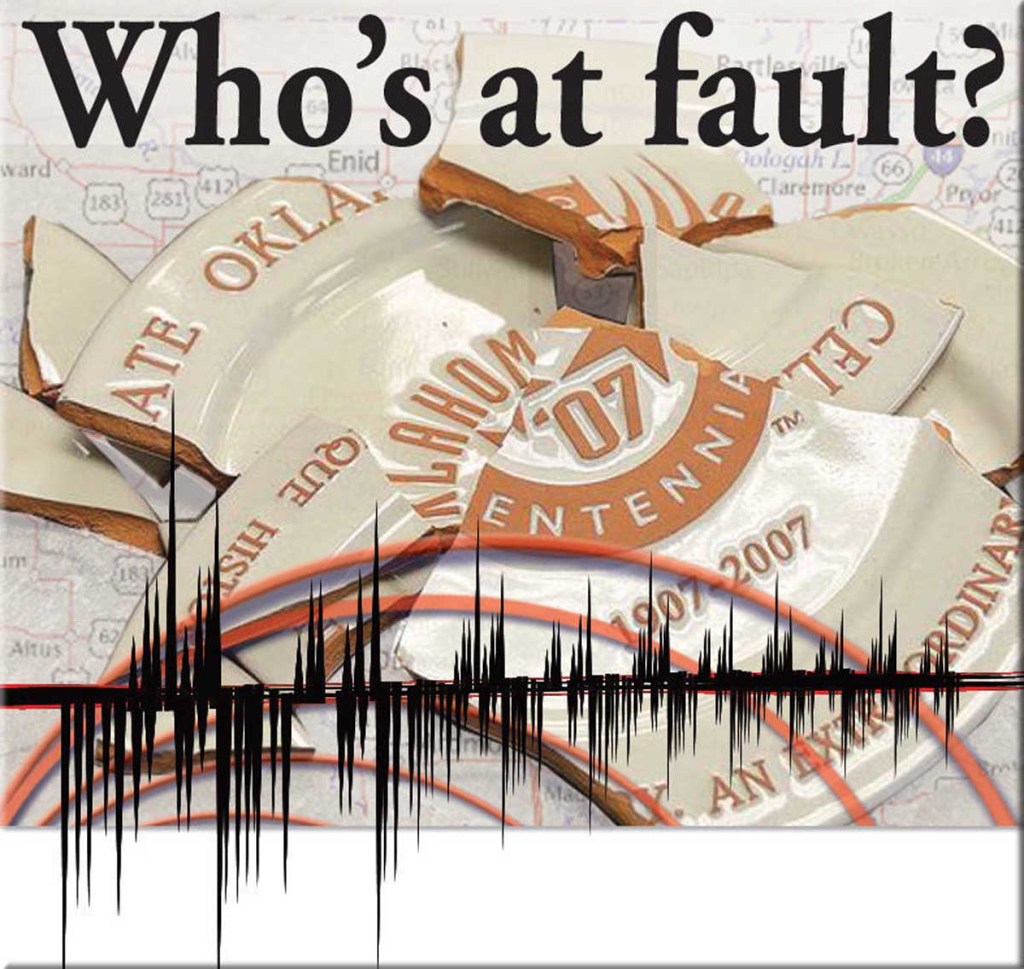EDITORIAL: To quell the quakes
Published 5:44 pm Friday, October 16, 2015

- Earthquakes in Oklahoma
A day doesn’t go by in northwest Oklahoma where we don’t talk about earthquakes.
A month and a half ago, we started our “Who’s at fault?” series to explore and explain the science behind the earthquake explosion in the Sooner State.
For our series logo, we used the Cherokee Messenger and Republican’s photo that spoke volumes symbolically. In February, a magnitude 4.2 earthquake caused cracks in several walls and knocked an Oklahoma Centennial plate off the wall at Alfalfa County Courthouse, causing it to shatter.
The day before our sixth and final installment of the earthquake series, a magnitude 4.4 temblor struck 21 miles north of Enid and was felt throughout the region.
Books flew off shelves, dishes rattled and grandfather clocks chimed in our readership area. A visitor on the second floor of Integris Bass Baptist Health Center in Enid felt the floor swaying.
Oklahomans want to know when the next big earthquake will occur.
In March, the U.S. Geological Survey said that “reactivated faults that have produced thousands of Oklahoma earthquakes are capable of causing larger seismic events in the future.”
This is serious business. We know of Californians moving to Oklahoma and getting earthquake insurance for the first time in their lives.
We’re grateful that the biggest quakes in our state haven’t occurred in highly populated areas to this point.
On Nov. 5, 2011, a 5.6 earthquake struck near Prague, Okla. Damage from that record-setting quake led to the Oklahoma Supreme Court ruling plaintiffs can seek damages against oil companies in jurisdictional courts.
Energy is a billion-dollar industry in Oklahoma. We appreciate companies providing proprietary data on faults to help the under-funded Oklahoma Corporation Commission better regulate oil and gas exploration activity and possibly prevent future quakes.
For the last decade, most oil exploration has involved both horizontal drilling and fracking, a process that generates a lot of brine wastewater as a byproduct.
It isn’t the fracking itself, but the saltwater disposal wells that are linked to Oklahoma earthquakes.
The science says the majority of state quakes were very likely triggered by injection wells associated with oil and gas production. Especially suspect is high-volume re-injection of wastewater into the deep-underground Arbuckle formation.
The Arbuckle formation may have reached its limit for holding water. Energy and Environment Secretary Michael Teague suggests mapping the Arbuckle and making a database to figure out how much water we are disposing.
“We just don’t know the answers yet,” Teague said.
Oklahoma policymakers need to take action based on fact, not fear. We need to better track injection well water and consider targeted volume reduction as one step to help stop the shaking.




